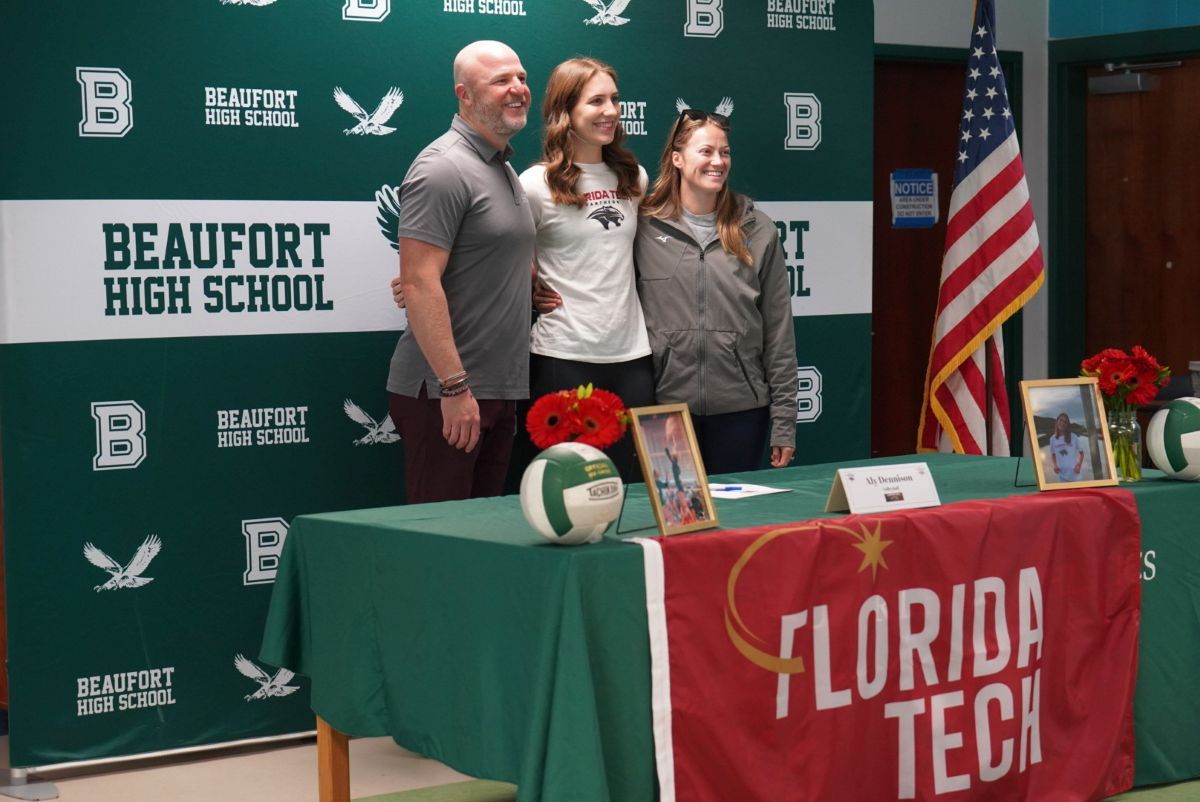By Scott Graber
Four years ago I found myself sitting next to Nan Talese at a dinner party hosted by Pat and Cassandra Conroy at their Beaufort home. Nan was then Pat’s editor at Doubleday and she was then, and is now, considered to be the very best editor in the United States. Nan’s clients include Ian McEwan, Margaret Atwood, Jennifer Egan and a host of other best-selling authors. I don’t often sit next to Park Avenue editors and I was intimidated, unable to speak to the person who had received the first Maxwell Perkins Award in 2005.
I have a large inventory of anecdotes that I dust-off and deliver with some confidence. Those stories have served me well for most of my adult life. But here was a person who had worked on “Atonement,” “Schindler’s List” and “A Handmaid’s Tale.” I worried that my reliable portfolio of bourbon-centered, barbecue-scented mischief would not measure up. In utter desperation I asked her when — after getting hold of the “Prince of Tides” manuscript — did she decide this was a great novel?
Nan stared at me without saying anything for 30 seconds then said, “I got through the first 200 pages and still didn’t have a clue what his novel was about. In a last-ditch effort to understand what was going on I put post-it notes on my bedroom wall.
“Sticky notes that had forward-pointing arrows meant that these passages moved the story forward,” she continued. “Arrows pointing backward indicated that these chapters were flashbacks. Double backward-pointing arrows denoted that this was a double flashback.”
After a sip from her glass of Pinot Noir she looked at me and said, “There were very few forward-pointing arrows.”
Pat was not frugal or penurious when it came to the use of adjectives, adverbs or description. He was often accused of “overwriting.” According to Bernie Schein, “The Prince of Tides” should have been three books. “But Nan found the story, created connections. She was just dazzling. Magnificent,” he said.
Nan’s work also involved getting Pat to produce, to write, especially when Pat was slow in getting “Beach Music” off the ground. In those days Pat was living on Fripp Island and was spending a lot of time walking the beach and wondering if he had a future as a writer. Nan decided she would lure Pat to New York, lock him in a hotel room, and compel him to write if he wanted to eat.
Nan told Pat that if he produced a certain number of pages, she would have a young, beautiful, Doubleday writer or B-list celebrity take him to dinner each night. The problem was that her favorite restaurant — Elaine’s — was Pat’s least favorite. He didn’t like the celebrities, or their palpable sense of privilege and their obvious desperation for a table where they would be seen. He preferred Chinese take-out brought up to his room at the Surrey Hotel.
From time to time Nan and Pat had disagreements about what should stay (in his books) and what should be cut out. This was especially true when Pat was writing about his Citadel basketball team in “My Losing Season.” The memoir began by recounting the miserable 1966-67 season and an authoritarian coach who destroyed a team that might have done much better. Nan was not at all certain that the game of basketball — and a team that spent its timing whining or weeping about their coach — was a subject that could sustain the reader’s interest — and Nan was not shy about telling Pat what she thought about his “basketball book.”
“These days it is rare to find an editor who has the time to nurture a young writer, let alone acquire a promising manuscript that requires a great deal of work,” says Marly Rusoff, who was Pat’s literary agent. “Today, most writers starting out end up hiring their own freelance editor before even finding an agent, but even best-selling authors often hire outside editorial help, paying them $20,000 or more.”
And that’s not the end of it.
For most writers it’s necessary to hire an outside publicist — another $6,000 to $15,000 to supplement what your publisher will do, and in addition writers must create an online presence, usually a website and perhaps a blog where one might chat-up one’s readers, costing both money and time. Yes, you’re going to spend time (and money) speaking to fiction-reading matrons at book clubs; sitting and hopefully signing at bookstores; and talking about your writing at assisted-living centers. The reality of publishing is that for the most part, until you are a bestselling author, the writer is going to do most, if not all, of the selling.
It is clear that the collaboration between Nan and Pat was one of the most successful collaborations in modern American fiction. Nan’s job was to remove the non-essential words and gratuitous phrases, but to keep the substance and refine the poetry. It is clear that Pat needed Nan’s knife, and her sticky notes. But it is also true that Nan needed the mountain of hand-written pages, the mother-load of gemstone-larded rock that Pat brought to the equation.
Scott Graber is a lawyer, novelist, veteran columnist and longtime resident of Port Royal. Email Scott at cscottgraber@gmail.com.






